Is Pizza Bad For You?
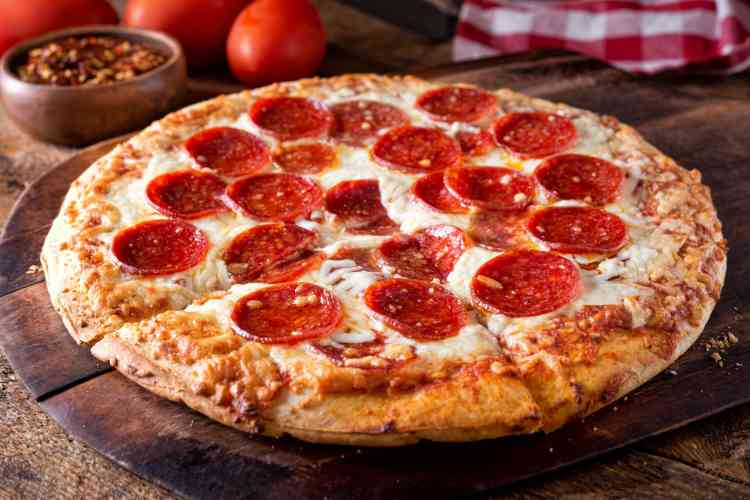
Pizza is many people's favorite food, but is pizza bad for you? Hot, melty cheese, delicious sauce and savory toppings all contribute to pizza's popularity.
However, this food is often labeled as indulgent because it isn’t the healthiest option. Pizza is usually considered unhealthy because it is high in calories, carbohydrates and sodium. All of these are nutritional factors that should be eaten in moderation, so it begs the question of ‘is pizza bad for you?’.
Pizza tends to be a crowd-pleaser, whether you’re having a party or looking for a meal that everyone will love. But how nutritional or not a pizza can be depends heavily on the type and the ingredients.
Factors such as the type of pizza or where the pizza is from can also play a role in the nutritional value. So, is pizza bad for you? We’ve got the breakdown on your favorite food.
Jump to Section
- How Bad Is Pizza for You?
- Why Is Pizza Bad for You?
- Is Pizza Fattening?
- 11 Ways To Make Pizza More Healthy
How Bad Is Pizza for You?
While not all foods are inherently bad, pizza often stands out as one of the unhealthier choices for a meal. So, how bad is pizza for you exactly? It really depends on a few factors. Ingredients play a major role in how healthy pizza is. An extra cheese pizza with meaty toppings, for example, isn’t as healthy as a pizza that’s loaded with vegetables. Portion size can also affect how bad a pizza is for you. Eating one slice of pizza or a small personal pizza would be a healthier option than three to four slices in one sitting. Frequency also plays a role in how bad pizza is for you. Eating pizza every day poses greater health risks compared to enjoying it occasionally.
Opting for healthier pizza options or foods similar to pizza can satisfy a craving without the high calories. However, if you don’t want to swap out getting a delivery from your favorite pizza place, you may want to opt for a smaller portion size or eat pizza in moderation. While pizza isn’t necessarily a ‘bad’ food, it can be unhealthy for you. So eating it in moderation along with an overall balanced diet is essential.
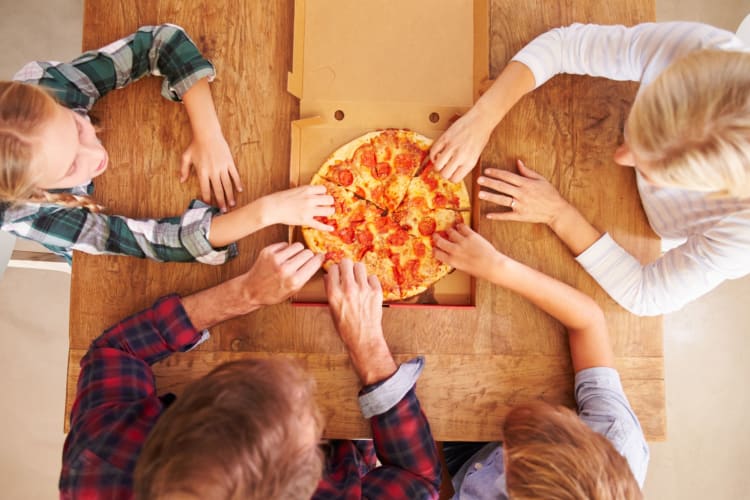
Why Is Pizza Bad for You?
So, why is pizza bad for you? Most pizzas, particularly frozen varieties and from fast-casual restaurants, are high in saturated fats and calories. Saturated fats can increase cholesterol levels, which can put you at risk of heart disease and excess calories can lead to weight gain. Toppings such as extra cheese and processed meats contribute more to pizza being bad for you.
Is Frozen Pizza Bad for You?
Frozen pizza is often a go-to for busy people, whether you’re a college student or a family with a hectic schedule. A frozen pizza is an easy meal to pop into the oven and have on a night you’re not able to cook. Despite the convenience, these types of pizzas can be bad for you. They’re often high in calories, sodium and unhealthy fats, as well as having more artificial preservatives. Processed meat toppings, stuffed crusts and extra cheese add to the poor nutritional value. Frozen pizza isn’t the best for you but, again, having it in moderation is okay.
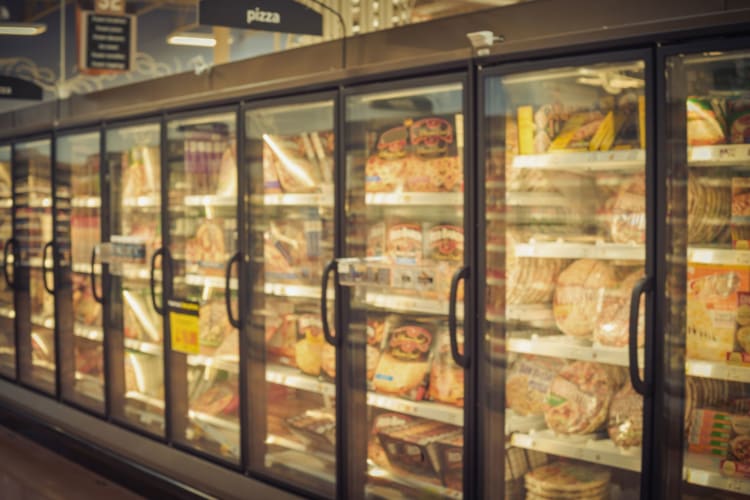
Is Cauliflower Pizza Bad for You?
Is pizza bad for you if it’s made with a cauliflower crust? A cauliflower crust is a healthier option than the standard bread pizza crust because it tends to be higher in protein and fiber, while being lower in calories and carbohydrates than a traditional crust. Keep in mind that the toppings you put on a cauliflower crust can still affect the healthiness.
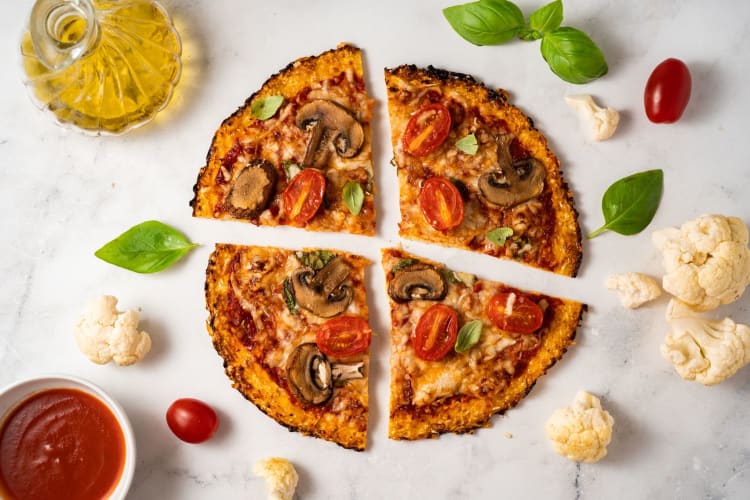
Is Homemade Pizza Bad for You?
Is pizza bad for you if it is homemade? Pizza is less likely to be bad for you if it’s homemade because you can control the ingredients put into it. You can make a crust and sauce that has less added sugar and sodium. You can also better control the toppings and opt to add healthier options like vegetables or grilled chicken. When compared to store-bought and take-out pizza, which frequently incorporate added sugar and sodium to create a better taste, homemade pizzas emerge as a potentially healthier alternative, being less detrimental to your health.
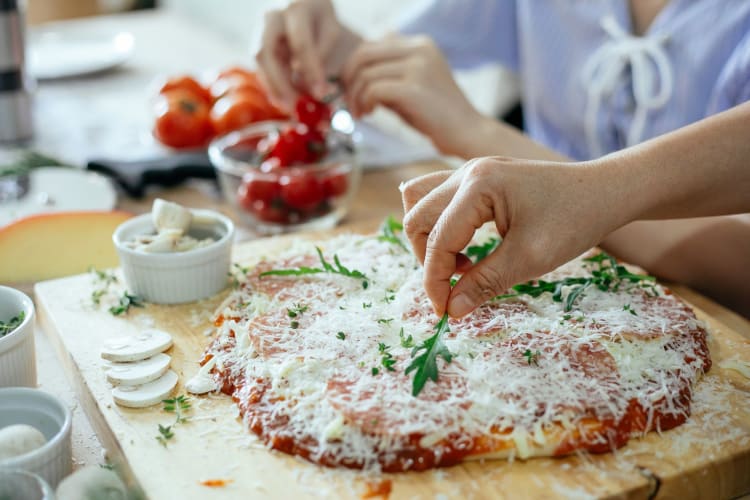
Is Eating Pizza Every Day Bad for You?
Many people think pizza is so good that they can have it every day. But is pizza bad for you if you eat it every day? Absolutely, eating pizza every day would not be the best idea. Because of the high calories, saturated fat and sodium, eating pizza every day would affect your health negatively. Daily consumption of pizza can lead to weight gain, high cholesterol and a higher risk of heart disease and other chronic health conditions. However, the question ‘is pizza bad for you’ becomes less alarming when enjoyed in moderation, such as indulging only one to two times a month.
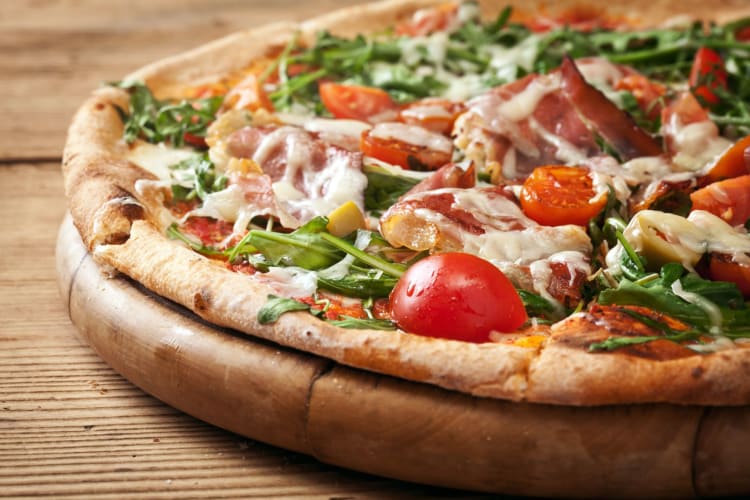
Is Pizza Fattening?
Many pizzas can be high in calories, which can lead to weight gain. Many pizzas from restaurants and fast food places can contain processed meats like pepperoni, along with sauces that are laden with added sugar and salt. These ingredients can contribute to weight gain and have negative effects on your health. Popular pizza types like stuffed-crust and deep-dish pizzas can also be more fattening options.
There are some pizzas that can be healthier and less fattening, though. Opting for a pizza made with a cauliflower or wholewheat crust can be healthier as it will have more protein and be lower in calories. Utilizing healthier toppings can also make pizza more nutritious. Common vegetables like peppers, mushrooms and onions are a good start. You can also add spinach, squash or sun-dried tomatoes for fancier toppings. Using lean meats like grilled chicken, chicken sausage or turkey bacon can also make your pizza more nutritious.
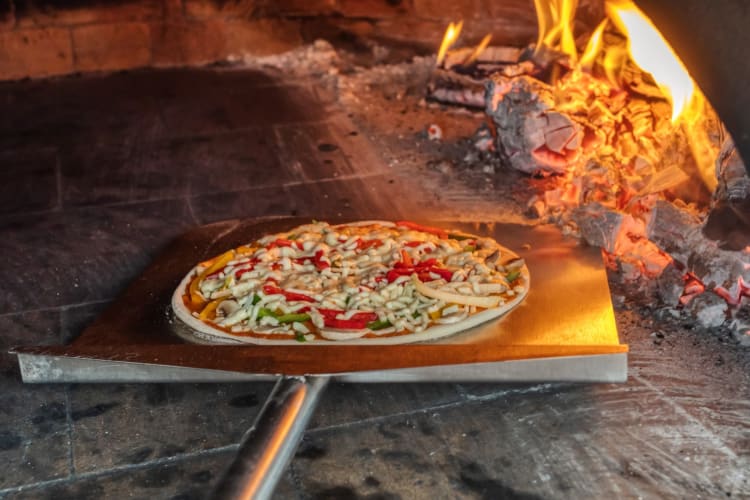
11 Ways to Make Pizza More Healthy
You don’t have to completely give up pizza to eat healthier. There are a few ways to make pizza healthier. These are smart swaps for your typical pizza night and a good option if you’re looking to cut some calories, sugar or sodium from your diet. Healthy pizza is also great if you’re on a weight-loss plan and want to satisfy a craving. However, it's important to consider that pizza can be bad for you if consumed excessively. So, here are ten tips for how to make healthy pizza without giving up any taste.
1. Add Vegetable Toppings
Vegetables are a key part of a healthy diet. So, if you’re wondering how to start eating healthy, start by adding healthy ingredients to your favorite foods. A good cheesy, saucy pizza is delicious but adding lots of vegetable toppings can make your favorite food much more nutritious. Consider adding vegetables like peppers, spinach, squash, kale, broccoli, artichoke or mushrooms on top of your pizza to get the fiber and vitamins vegetables naturally have. This is a great opportunity to get creative with your pizzas, so try coming up with new colorful combinations that explore flavors while being a little more nutritious.
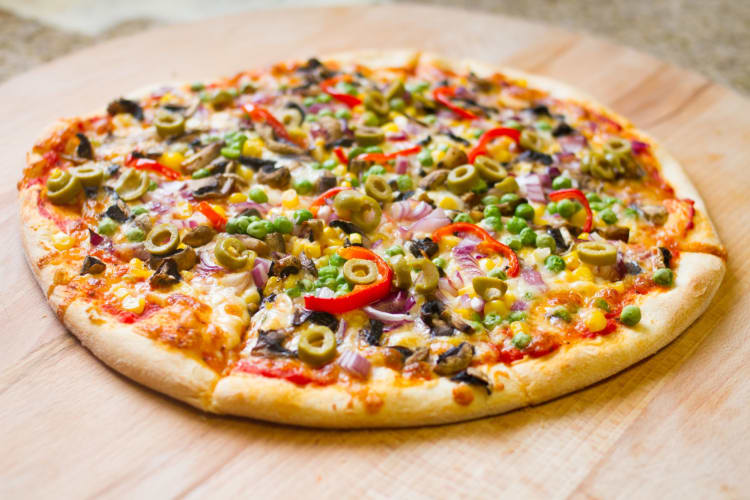
2. Try a Wholegrain Crust
Instead of your standard pizza crust, swap to wholegrain crusts for your pizza. Wholewheat crusts are rich in fiber and have more vitamins and minerals than traditional crusts. This type of pizza crust has a lower glycemic index because it is lower in carbohydrates. Wholegrain pizza has less of an effect on blood sugar levels, so this can be a better option for those who are diabetic or simply watching their sugar. Wholegrain crusts are also lower in calories, so it’s also a good option if you’re trying to stay under a certain amount or lose weight.
3. Swap the Cheese
Cheese is many people’s favorite part of pizza. However, it can be high in saturated fat, which can raise cholesterol and increase the risk of heart disease and stroke. That doesn’t mean you have to go cheeseless. Instead, skip extra cheese on the pizza. Reducing the amount of cheese will help decrease the calories and saturated fat content of your pizza. Another idea is to swap the type of cheese you use as a topping. Part-skim mozzarella, sharp provolone and low-fat Parmesan are good options for addressing concerns about whether pizza is bad for you.
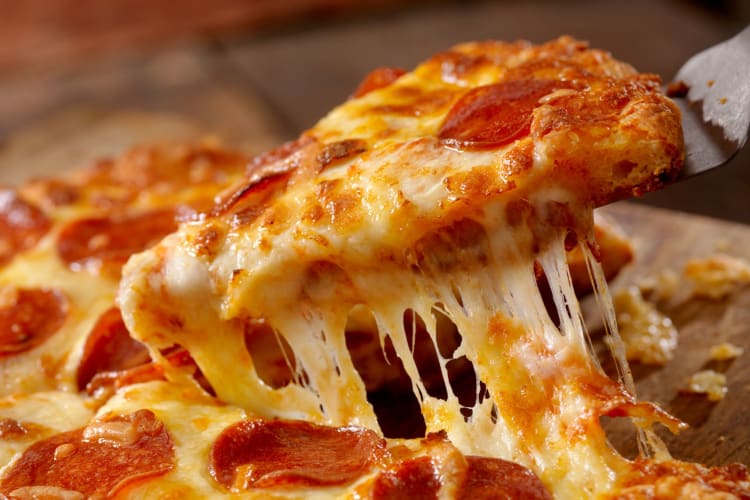
4. Keep an Eye on Portions
It’s often easy to have multiple slices of pizza, especially if you’re having it as a meal. However, the average serving size is about three slices per person. This can depend on your height, weight, gender and other health conditions. But, in general, sticking with one to three slices in a sitting can help address concerns about whether 'is pizza bad for you'. Of course, having a single slice of pizza is a good way to keep calories, carbohydrates and saturated fats low. You can also consider the type of pizza. You may opt to have more slices of thinner crusts than a deep dish pizza.
5. Eat Salad on the Side
If you’re not one to pile your pizza high with toppings, you can also get your nutritional value somewhere else. Instead of getting a side of garlic knots or mozzarella sticks from the pizzeria, get a salad on the side to eat with your pizza. Opt for nutritionally dense greens like kale or spinach as the base and top it with onions, tomatoes, carrots or broccoli to increase the nutritional value. While this won’t make the pizza itself healthy, it’ll give you more vitamins and minerals during the meal. A salad can also help you feel full, so you won't have as many slices of pizza.
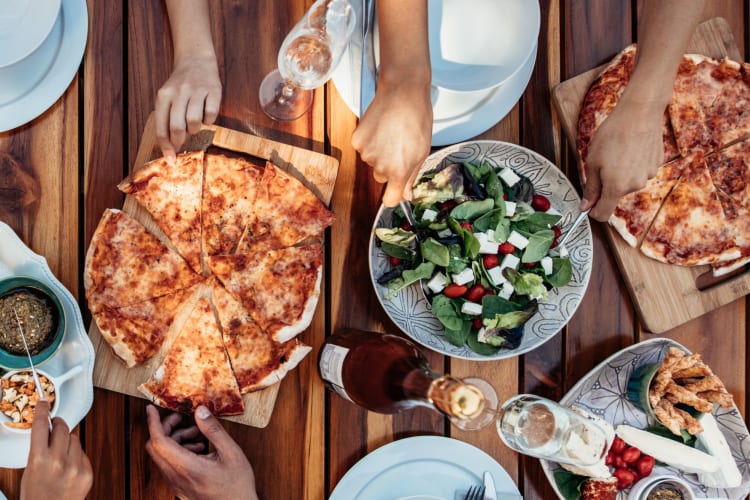
6. Make It Homemade
Skip ordering in pizza or buying it frozen from the store and instead make it homemade. When you make it yourself, you can control the ingredients and choose to make it healthier. Simple pizza ingredients, such as flour, eggs and olive oil tend to make a relatively healthy pizza. When you make the pizza yourself, you can also control the portion size for each of the ingredients, addressing concerns about whether 'is pizza bad for you'. Check the recommended serving size for cheese and pepperoni and use that as a guide when topping your pizza. This can help prevent you from adding excessive calories to your pizza. So, whip out your pizza making tools and make your favorite dish yourself.
7. Opt for Lean Meats
Savory pepperoni and salty sausage are a favorite of meat lovers. Unfortunately, these meats can be high in calories, fat, sodium and cholesterol, which can be bad for your body and health. Instead, you can swap these for lean meats such as chicken or turkey, to give you the meaty flavor you crave. These lean meats also have health benefits, like being high in protein. Incorporating lean meats into your pizza can also increase its satiety, allowing you to eat fewer slices while still feeling satisfied.

8. Choose Thin-Crust
Not all types of pizza are bad for you, relatively. While you shouldn’t eat pizza daily, there are some types of pizzas that are better and healthier than others. Thin-crust pizzas tend to be a better option because they can help you cut down on calories. Less bread means fewer calories and sugars that can be detrimental to health. A thinner crust also means that you can have more room for vegetables that can fill you up faster.
9. Load with Healthy Ingredients
Is pizza bad for you? It doesn’t have to be if you load it with healthy ingredients, even in sneaky ways. You can add vegetables to the crust, like cauliflower and spinach. You can also add more vegetables to the sauce, like peppers, chiles, herbs and onions. This is a great option if you’re looking to eat more vegetables or if you’re trying to get a picky eater or kids to get their serving of vegetables.
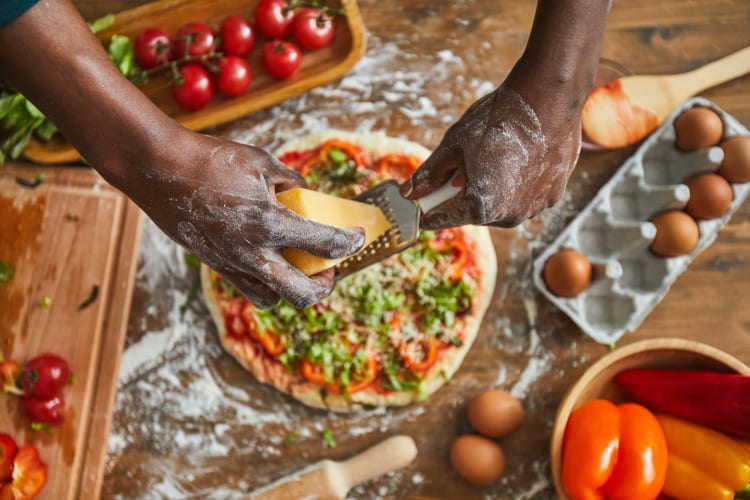
10. Change the Base
Instead of using a traditional pizza crust, save time and calories by using a tortilla. Maybe you don't have time to make your own dough but still want a homemade pizza? Try buying a pack of tortillas and using them for the crust. Simply spread your sauce on top, sprinkle over some cheese and add your chosen toppings before putting in the oven for 10-15 minutes to crisp up. Using tortillas as a crust option can be a healthier choice due to their typically lower calorie content compared to traditional bread dough.
11. Stick with Healthy Sauces
Pizza isn’t bad for you if you choose the right ingredients. Opt for a healthier sauce that can help cut down on calories and increase the nutritional value. Skip alfredo and cream sauces that can be higher in saturated fat and add unnecessary calories to your pizza. Instead, choose a red sauce or pesto sauce. Tomato sauce is made with fresh tomatoes, spices, herbs, onions and garlic, typically. As long as it doesn’t have a ton of sugar or salt added to it, tomato sauce can be a healthy option. Pesto sauce has basil, parsley, pine nuts and garlic and is also a healthier option and lower in calories.

Everyone loves a good slice of pizza but is pizza bad for you? Sometimes but it doesn’t have to be. Most of the unhealthiness of pizza comes from processed toppings and high portion sizes. However, there are ways to make pizza better for you, lower in calories, carbohydrates and fats. Swapping some ingredients, making your own pizza and loading it with vegetables can make it a more nutritious meal.
Watching portion sizes and eating in moderation is also important when it comes to eating pizza. You can enjoy your favorite food without worrying how bad pizza is for you. For even more ways to explore your favorite foods, check out other experiences happening on Cozymeal.



FOOD FOR THOUGHT?
Join the conversation.